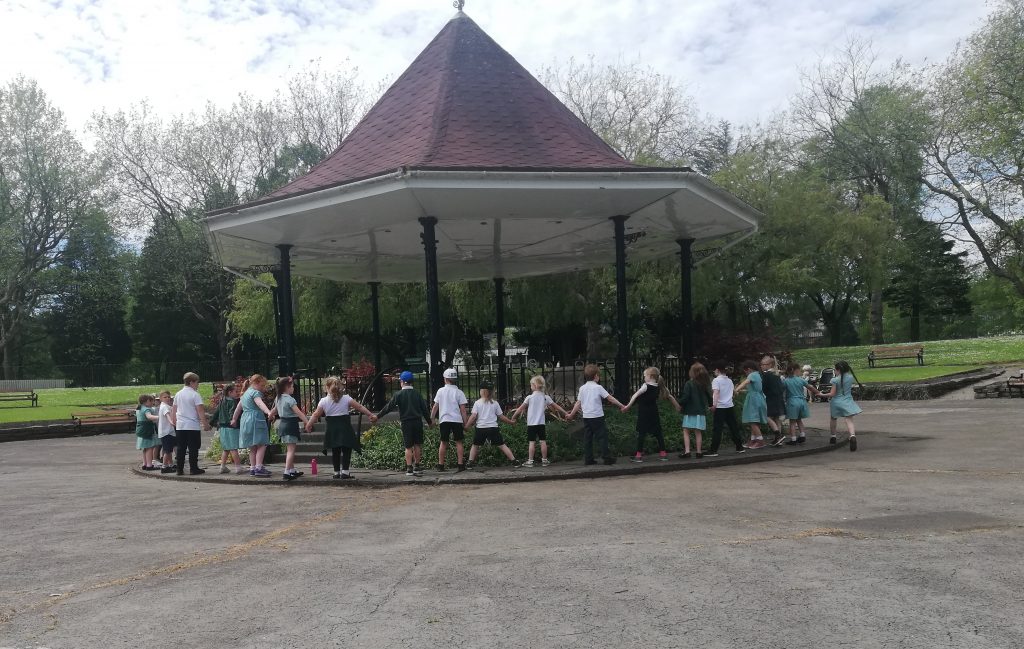Intro
The use of QR codes to provide information at tourist destinations and sites of historical interest is a well established practice in towns and cities as is the practice of businesses using them to display advertisements. Similar codes are also already used by some tech-savvy teachers; QR codes linked to photos and videos of work are printed and attached to pupil’s workbooks, QR codes on classroom doors lead to the book of the week or a short video about the current topic. The codes provide an easy bridge between the physical and digital worlds.
Scanning a code presents you with a challenge. The challenges range from multiple choice quizzes to whole projects and change each time the same code is scanned. Challenge locations can be linked to form learning trails centred around themes such as careers, history, STEM and language.
For example, in our local park in Pontypridd, Wales, a code at the bandstand links to a video of a brass band playing at a bandstand. Another code links to a series of ever-changing challenges associated with the band stand; musical composition, an exercise in hypothetical event planning, the mathematics of the circular structure and paths leading to it, the history of public entertainment in parks, the science of acoustics. Over at the play park primary school classes are challenged to see how many people can fit on a giant see-saw; By the trees, to collect and sort sticks and leaves of varying sizes into sets; at the war memorial to reflect on the reasons for war and poppies and to see the photos and hear the stories told by their grandparents, by the bridge, a collection of artwork and poems written by school children.
